The Chalk Path
Abbotscliffe (Dover/Folkestone) 2022 & Folkestone Warren 2023
Part of SALT + EARTH Festival in collaboration with Folkestone Fringe, Creative Folkestone, and Kent AONB
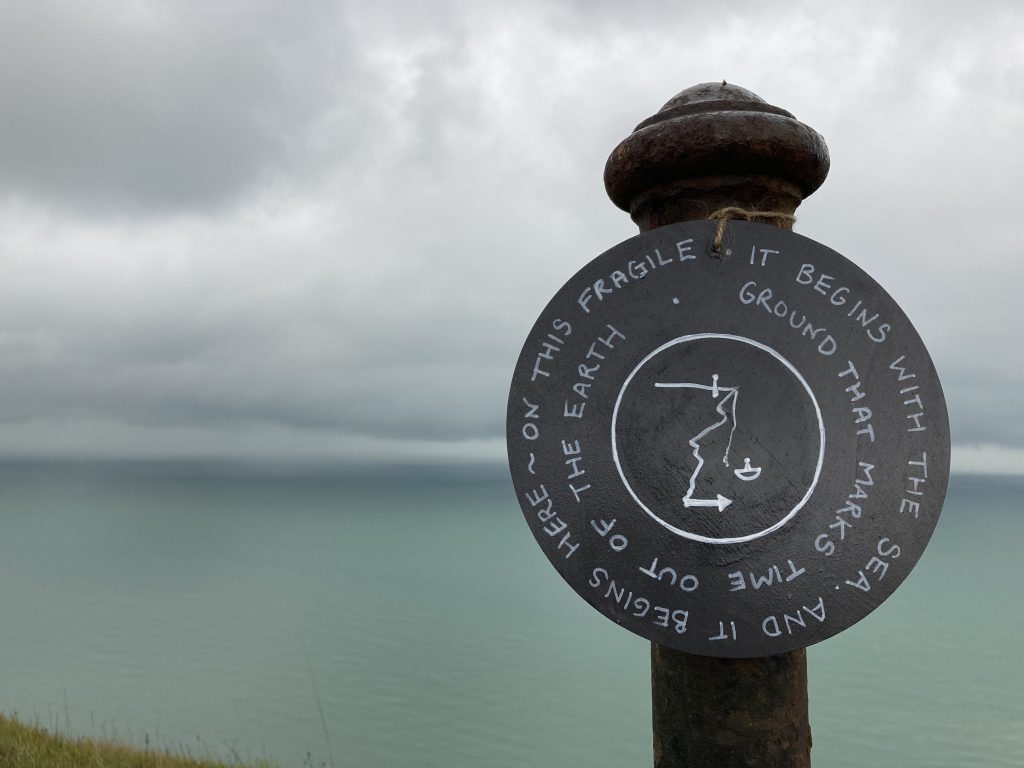
The Chalk Path returns in 2024…
This process began with searching for a way to express the vast amount of time held in the chalk cliffs and trying to understand where we fit in: we tiny humans, almost insignificant compared to the epic scale of chalk, clay, and sea, and yet, making an impact on the earth out of proportion to the time we have been here and to our part in the cycle.
The research journey has led me down many avenues: from re-imagining a chalk land bridge connecting us to France; to meeting geologists and land managers and confronting numbers of such incomprehensible magnitude I began to wonder if our man-made system of telling time even worked when the human brain is not equipped to understand so many zeros; and I looked instead to the ways the land and sea mark the passage of time in repeating patterns.
I wanted to physicalise this sense of time and scale on the landscape itself, and to invite people to consider through their own bodies how we relate to the land and sea by literally walking down through time (a journey of several million years from the top to the bottom of the chalk cliffs), and ending at the beginning, at the sea, where they might discover a new perspective on the journey, the place, and ourselves.
As we look to the future, we might look at the materials and way of living of our ancestors and try to slow down a little to planetary time to gain some perspective on our place in the world and the impact we are making. I hope the experience of The Chalk Path makes space for this.
Below are the experiments and plans to date:
EPISODE 1… In September 2022, as part of SALT + EARTH Festival in connection with Kent AONB’s bid to become a Geopark, I created Chalk Coracle, and led people on a walk down through time, from the top to the bottom of Abbotscliffe, encountering provocations along the route that made space for thinking about scale and our connection to this time and this place. The brave among the group tried solo outings in a coracle, where they looked back at the distance they had covered and could fully feel the epic scale of the cliffs in relation to the vulnerability of their own bodies on the water in a hand-built boat.
EPISODE 2… In September 2023 the walk became an audio journey, starting from East Cliff Coastwatch Station and inviting travellers to tune into the VHF radio and reveal layers of time as they descended through the cliffs into Folkestone Warren to meet the sea, where they searched for an ancestor on the beach and considered what layer they wished to leave beyond their own lifetimes.
EPISODE 3… coming in 2024… the audience are invited to look across the channel – where perhaps their journey is shared by a walker on the other side, looking across, seeking a connection that transcends human experience. The audio walk will be developed for Cap Blanc Nez, as a partner experience to the walk in Folkestone. Our two lands were once one, the sea has been here for less time than it has not: through this experience we can walk together down through deep time, to reflect on the past and reimagine the future. This walk is planned to launch on both sides of the English Channel/Le Manche in Summer 2024 as part of the Year of the Geopark, and will be accompanied by a film that offers a perspective on the simultaneous walk experience and re-unites the two chalk cliffs recently split by the channel.
Explorations into time, tide, and materiality continue, alongside a search for the landbridge…
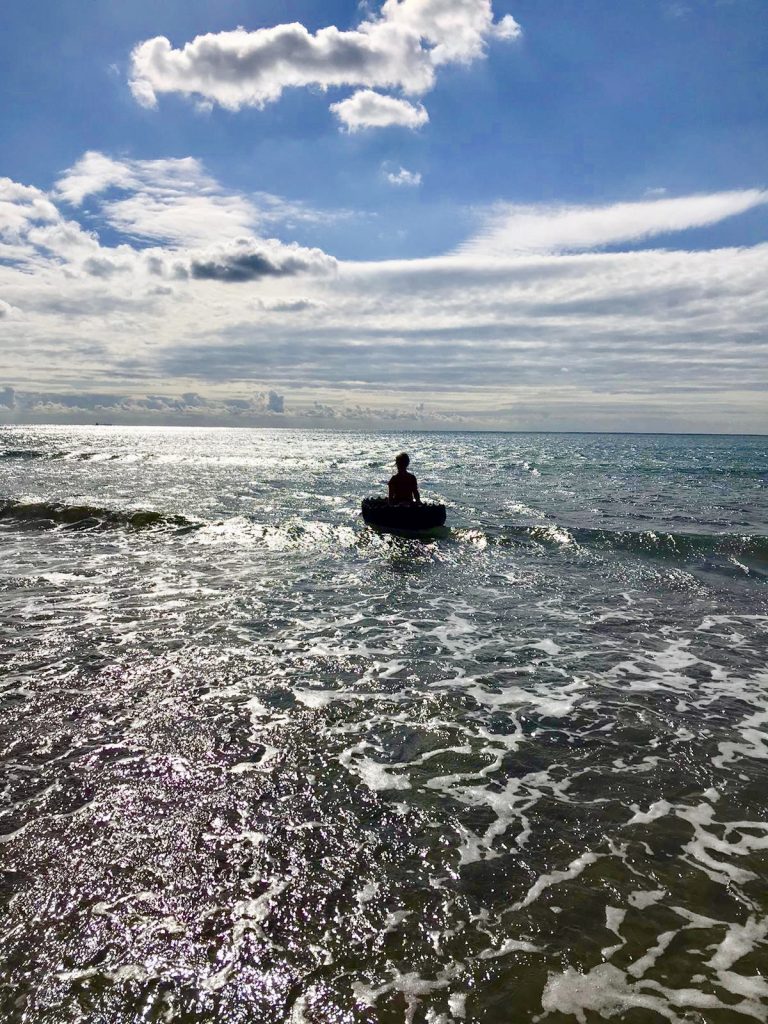
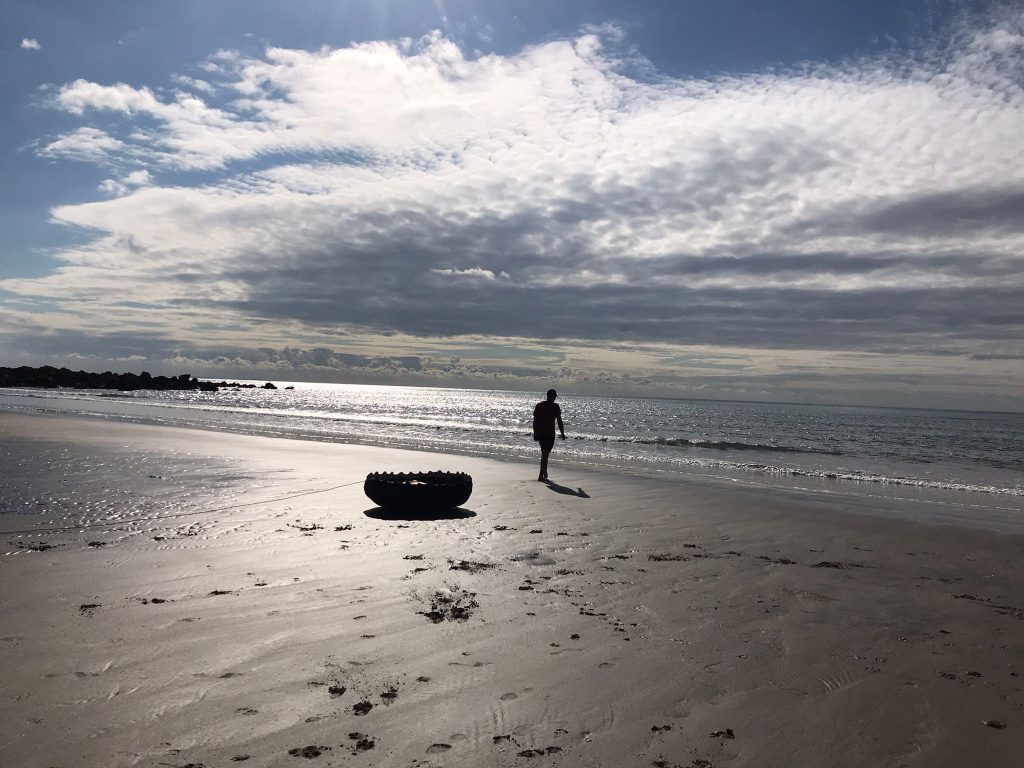
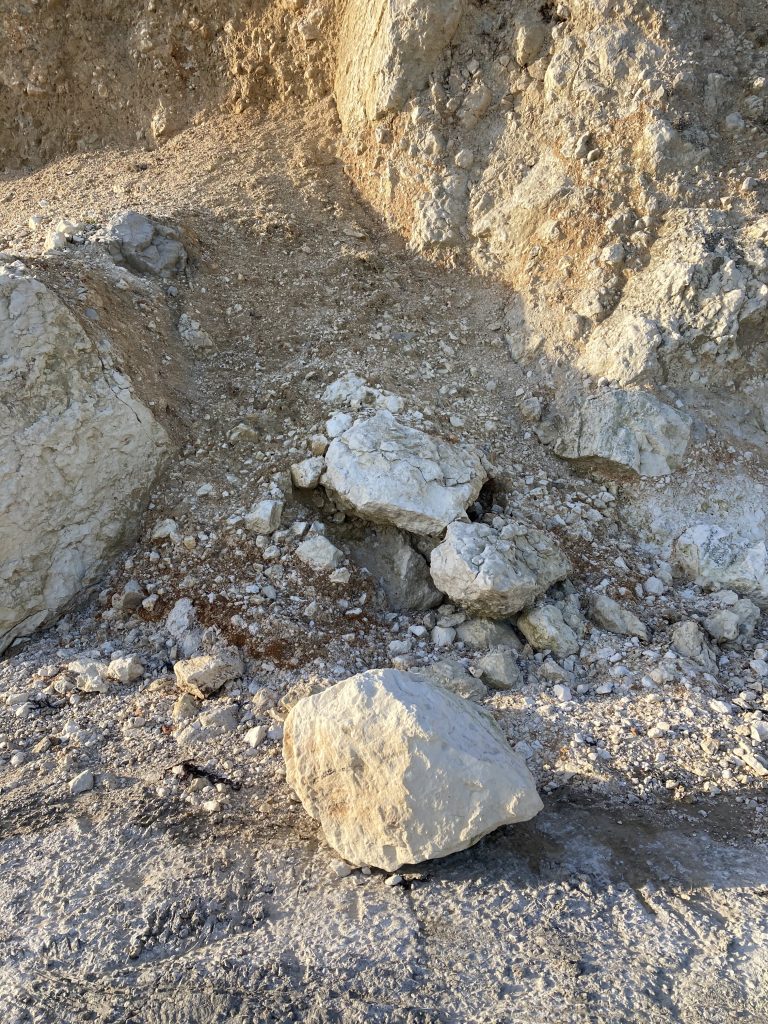
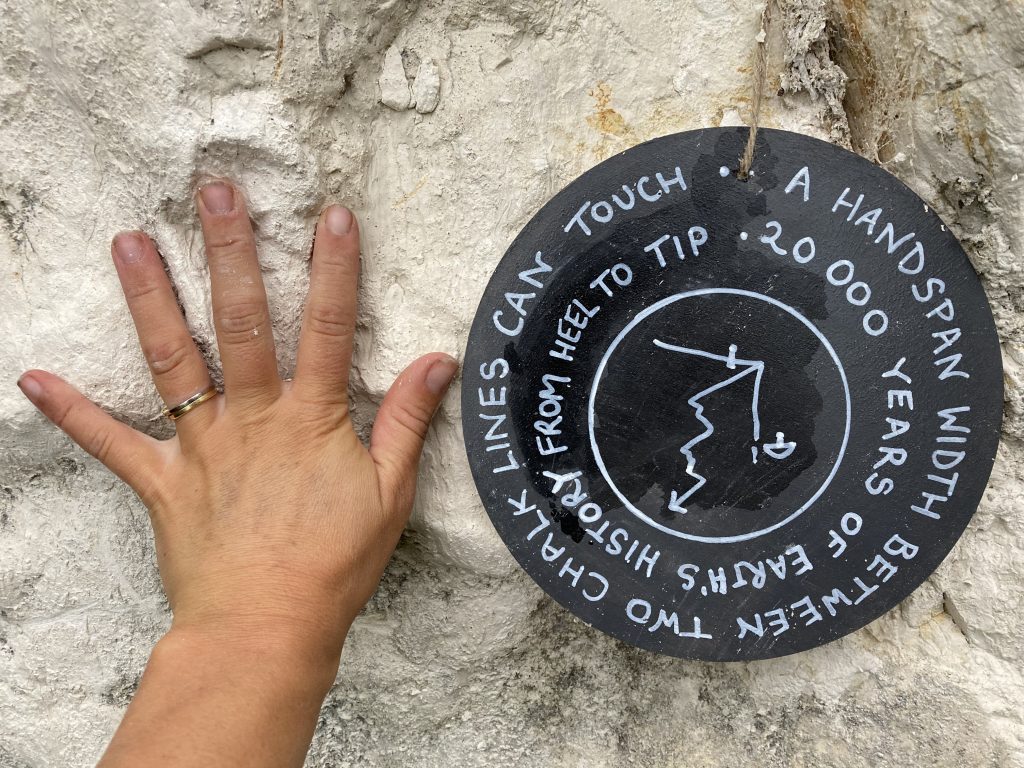
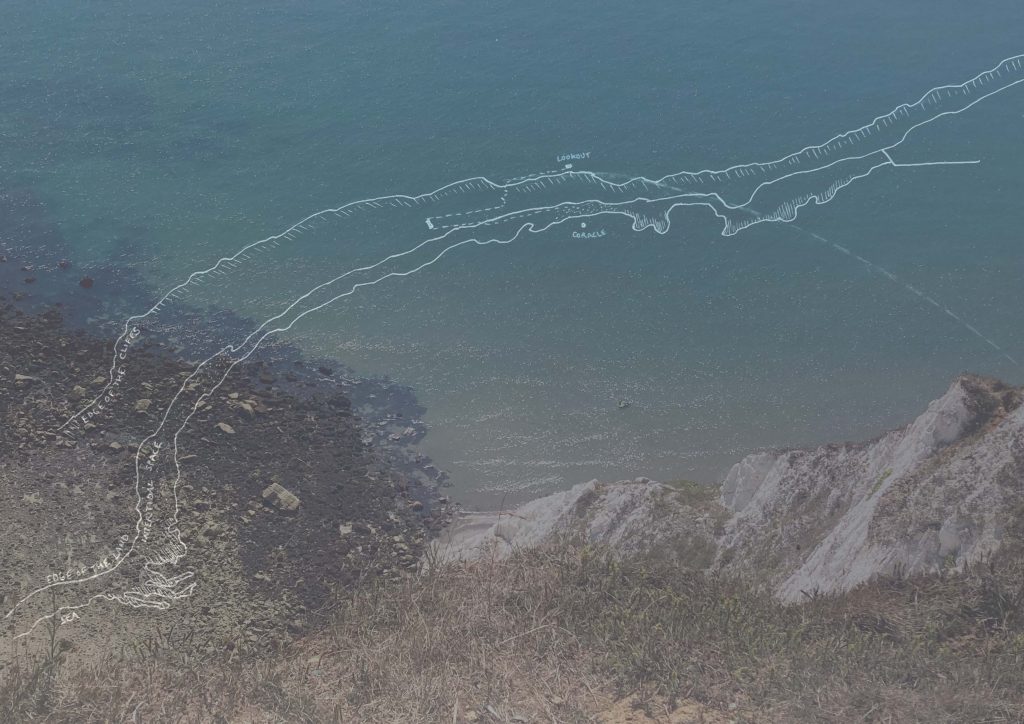
With thanks to Gemma Riggs (Sound Production, Chalk Coracle II); and advisors Melanie Wrigley, Andy Gale, Simon Drake & Alain Trentesaux, and Folkestone NCI Coastwatch Station. Film by Clare Unsworth.